Looking for more quilt patterns to make for loved ones?? Here is a collection of free quilt patterns for you to browse and choose from! Whether you’re a novice or an advanced intermediate, you’re bound to fall in love with these lovely quilt patterns, which are accomplishable with almost any level of experience.

How To Make A Quilt
Starting your very first quilting project may seem really intimidating at first but don’t fret! We’ve listed a few free beginner quilt patterns for you to try below. But before you start, here’s a simple outline of how to make a quilt with our free quilt patterns!
- Select a quilt pattern.
- Ensure that you’re equipped with the basic quilting tools necessary and materials such as batting and backing fabric.
- Whether to prewash your fabrics really comes down to personal preference. There are pros and cons, so learn more about whether Should You Prewash Your Fabric Before Quilting here!
- Cut your fabrics with precision as detailed in the pattern tutorial, or use precut fabrics.
- Sew your patchwork together with a quarter-inch seam allowance.
- Once your top layer is done, layer it your batting and backing fabric together. Baste your quilt with pins or a spray adhesive.
- Quilt the layers together with your sewing machine.
- Trim the edges if needed and bind your quilt, and you’re done!
Quilting Supplies & Tools
The following is a list of the basic tools you will need for a quilting project. Though a Quilting Ruler and Rotary Cutter are not required tools for beginners or those who use precut fabrics, they are very useful tools for cutting straight lines precisely.
- Quilting weight fabric for the top patchwork piece and backing
- Batting
- Sewing Machine
- Quilting pins and thread
- Scissors
- Rotary cutter and cutting mat
- Quilter ruler
- Iron and ironing mat
- Measuring tape
Optional But Helpful Tools
Here is a list of useful quilting-specific sewing machine presser feet. Each of them has a specific application that will assist you in perfecting your quilting work. If you are serious about quilting projects, you may want to collect all of these feet down the road.
- Quarter-inch foot or patchwork foot: It ensures a uniform distance of 1/4″ between the fabric’s edge and the seams.
- Walking foot or Even feed foot: It holds all layers of fabric together as it travels through the sewing machine, great for sewing a straight line on multi-layer fabrics.
- Edgestitch foot: It is useful for sewing in the ditch and topstitching because it has a blade that guides the needle to be perfectly aligned with the stitching line.
- Free-motion presser foot: It is a special sewing machine foot that allows manual fabric movement for creative and intricate stitching in quilting, embroidery, and artistic sewing projects.
FAQ
Before you dive into the list of free quilt patterns to start your journey, here are some frequently asked questions to clear up your doubts.
1. What Skills Should I Have Before Begin Quilting?
If you’re a beginner, be sure to acquaint yourself with the basics of sewing and some of its terminology. To kick off your sewing journey, check out our comprehensive guide on How to Hand Sew! This could help you become acquainted with a range of hand-sewing stitches and tools.
2. What Sewing Machine Do I Need For Quilting?
Once you’ve honed your skills with the needle and thread, it’s time to bring out the big guns! Making a quilt from scratch would be an almost impossible task without a sewing machine (read more about our pick of the best sewing machine for beginners).
If you have a basic sewing machine, you can make a simple quilt with it. However, if you are serious about quilting, you may want to consider upgrading your sewing machine with the quilting edition. Check out this list of the Best Sewing Machines for Quilting. Before purchasing a quilting sewing machine, you should consider the throat space, speed control, the ability to lower the feed-dogs, and thread tension control.
A Long Arm Quilting Machine will be ideal if you intend to work professionally.
3. What Are The Common Quilting Stitches?
Quilts are made up of three layers of fabric that are sewn together: the top, the batting, and the bottom. We rely on quilting stitches to keep the layers together.
There are many different ways for you to stitch your quilt; you may take some creative liberties, and free motion stitch your quilt to give it a touch of individuality; you may do it the traditional way with diamond or horizontal quilting stitches; it is totally up to you!
Here are a few basic stitches you may stumble across while reading through our collection of free quilting patterns.
– Horizontal quilting stitches- stitching straight lines at regular intervals across your quilt to create a striped surface
– Square/ Diamond quilting stitches- sewing straight lines horizontally and vertically at regular intervals or diagonally to create quadrilateral shapes
– Free motion stitching- allows the quilter to move the fabric freely in any direction while stitching
– Stipple stitching/ Meandering- a form of free motion stitching that involves simple curves that fill the blank canvas of your quilt
– Stitching in the ditch- stitching at the seamlines where two different fabrics meet.
Here’s a comprehensive guide to quilting stitches if you’d like to know about more types of stitches to complete your quilt.
4. What Are The Common Quilt Blocks Use In Quilt Patterns
Quilt blocks are formed when pieces of fabric are sewn together to form a unit that belongs to a patchwork. The complexity of the quilt block frequently dictates the level of difficulty of the quilt patterns. Don’t be surprised to find some of these in the quilt patterns below!
We’ve got here two simple quilt block tutorials for your reference.
– Half Square Triangle block (HST) is super simple and versatile as it could be adapted into other block units to form a Pinwheel pattern, a Pine Tree pattern, and many more!
– Basic 9 Patch Quilt Block, which is also commonly found in many quilt patterns. It’s a great way to make your quilt pop with different colored prints!
We shared more free quilt block patterns in a separate post that you might find them useful to plan an alternative design for your quilt.
5. Is There An Alternative To Using A Quilt Block Design?
Aside from geometry quilt blocks, appliqué is another popular method for creating quilt patterns. These appliqué designs typically require a fusible web to attach to the fabric.
And if you’re working with a lot of detailed appliques for a big quilting project, we’ve got a Quick Fusible Applique Method for you to try out! You could say goodbye to boring, time-consuming hand-tracing.
6. Why Use Precut Fabrics?
If you like to do things the traditional way by cutting your own fabric pieces, then that’s great! It also allows for greater creative freedom as you’re able to incorporate any shape you’d like into your quilt.
Of course, cutting each piece of fabric for your quilt can be quite a lengthy process, so if you’d like to save some time for yourself, you could opt for fabric precuts like charm packs, jelly rolls, layer cakes, or fat quarters!
If you’re new to the idea of precuts, you could check out this
beginner’s guide to precut quilting fabrics, where you’ll discover more about the types of fabric precuts and how they’re commonly used in quilting!
Precut samplers are a quilter’s dream since they contain bundles of coordinating fabrics that have already been cut to standardized sizes and are ready to be effortlessly woven into your designs. It’s also a perfect choice for beginners if you’re hoping to work with a variety of fabric designs ranging from deep, rich jewel tones to soft pastels without purchasing in yardage.
If you’re hoping to employ your newly bought precut fabrics into use for your next project, you’ve come to the right place! Scroll down for some jelly roll quilt patterns, layer cake quilt patterns, and fat quarter quilt patterns!
7. How To Wash & Care For Your Handmade Quilt?
After putting in the effort to sew a beautiful quilt, we will want to wash it with care in order to preserve its beauty and longevity. We believe that washing the quilt once or twice a year is sufficient. Avoid washing your quilt frequently because it will fade and lose its vibrancy.
Inspection: Before you clean your handmade quilt, inspect it for any loose threads and check for colorfastness. Try to fix up any damages to it and ensure its color won’t run before laundering it.
Washing: Without a doubt, it’s best to clean it as gently as possible, so we recommend washing it by hand with cold water and mild detergent to protect the delicate stitching and fabrics. If it cannot be helped, you may use a gentle cycle in the washing machines with cold water. Avoid ironing and use the lowest heat setting to prevent compression or melting of the inner batting.
Drying: Leave your quilt out to air-dry by laying it on a clothes rack or any flat surface laid with towels. Do not hang it, as the weight of the moisture may pull on the quilt and damage or misshapen it. Avoid direct sunlight, as this can fade the colors and weaken the fabrics over time.
Storage: When not in use, store the quilt in a cool, dry place away from direct sunlight and extreme temperature changes. Change the way your quilt is folded on a regular basis to avoid permanent creasing.
What’s Next?
- Start sewing and share your completed DIY apron on Facebook and/or Instagram. Remember to tag us @craftpassion so that we can see them.
- Pin it to Pinterest for a future To-Sew List.
- Share with your sewing groups for a sew-along event.
- Browse more free sewing patterns to make
36 Free Quilt Patterns For You To Sew
If you’re looking for free quilting patterns, this is the perfect place to be! Whether you’re working with different pre-cut fabrics or hoping to sew quilts of different sizes (lap quilts, baby quilts, picnic blankets, or king/ queen-size duvets), we’ve got a compilation that encompasses all your needs!
Flower Hexagon Quilt Duvet Pattern
Check out this stunning floral quilt duvet! This duvet pattern, adorned with a field of hexagon flowers, exudes a homely, welcoming warmth. You'll even learn how to sew hexagon flower quilt blocks that may be used as appliques for your next project!
Minimal Triangles Quilt Pattern
Here's an easy quilt pattern made of half-square triangles! It's about 80"x80", so you could construct it with any 10" stackers of your choice.
Lattice Baby Quilt Tutorial | Quilting Tutorials
Here's a magnificent lattice baby quilt that finishes up to 41" x 49". With some pastel-hued 5" squares and sashing fabric, you could make this a sweet addition to the baby's room.
Secret Garden Quilt Pattern
This Secret Garden Quilt pattern also utilizes the Trapunto technique to give the blanket more artistic depth and details! This 62" x 88" quilt comprises a colorful array of flower and bug appliques made with charm packs and jellyrolls.
Road Runner Quilt Pattern
If you have a child who is obsessed with traffic and transportation, this Road Runner Quilt pattern would have them jumping with enthusiasm! This pattern introduces the Trapunto quilting method, which can be pretty difficult, so make sure you've done some form of quilting before embarking on this project.
If you'd like to try out a Trapunto method on a smaller project first, check out our Snowman Quilted pillow cover!
Strip and Flip Baby Quilt
Check out this rainbow-colored strip and flip baby quilt! This 36" x 41" quilt utilizes 27 colored strips and 2 white strips of fabric, but you're welcome to use jelly rolls instead if you've got some at hand!
Zig Zag Quilt Pattern and Tutorial
This 58" x 68" quilt pattern has this color gradient zig-zag pattern running diagonally across the white space, with 5 different coordinating colors for each zig-zag. It's made of 156 charms but feel free to use your own 5' square fabrics!
Squared Quilt Pattern
Look at this geometrical masterpiece by Suzy Quilts! Once you've got the 12" square blocks down, this pattern will be super quick to complete!
Crossroads Quilt Pattern
This 64" x 64" quilt from Happy Quilting comprises of gorgeously printed 5" stackers. You'll be cutting up rows of strips to compose this interesting crossroad pattern.
Preppy Quilt Pattern
Try making an Argyle-inspired quilt with this fat quarter quilt pattern! It measures up to 50" x 60" and uses 5 fat quarters and a yardage as sashing.
Wildwood Baby Quilt Pattern
Look at the stunning color gradient of this Wildwood crib quilt from Bonjour Quilts! With the contrasting color patches running parallel from each other and the use of scrappy binding to give off a seamless edge to this quilt, we would have thought of this as a work of art.
Stepping Out Quilt Pattern
If you're new to piecing curves together for a block, this quilt pattern is a great way for you to practice! The pdf even comes with a sizing chart ranging from baby-sized to king-sized quilts if you'd like to make matching sets for the family!
How to make a Simple Triangle Quilt
Now, if you'd like to exhibit your luscious stash of printed fabrics, this Simple Triangle Quilt would do the trick. You could make this 46" x 72" quilt with a stack of Fat quarters too!
Chevron Rag Quilt
Make yourself a warm snuggly rag quilt with this one-of-a-kind Chevron-style quilt pattern. This 63" x 66" piece makes for a perfect lap quilt on a chilly winter morning.
How To Make A Rag Quilt
If you like the vintage aesthetic of frayed ends on a quilt, you would love this rag quilt from Quilters Candy! This pattern comes in both baby size and lap size too.
When You Wish…Baby Quilt Pattern
This pattern may look a bit complex but it only features squares and half-square triangles so it's perfect for novices. The bright star motif on this 36.5" x 36.5" baby quilt is bound to make your child's wish come true!
Lone Star Baby Quilt Tutorial
This baby quilt pattern features a beautiful kaleidoscopic lone star motif against a pastel background. You'll require 16 pieces of precut 10" x 10" squares to complete this 39" x 39" baby quilt.
How to Make a Pinwheel Quilt Block
Once you've mastered the half-square triangle quilt block, this pinwheel quilt pattern from The Lucy Bird would be super easy for you! Just piece together a four-patch quilt block with the HSTs, and you'll have this modern quilt!
Half Square Triangle baby quilt pattern
Sew yourself this 40″ x 50″ crib quilt if you've got a pretty plethora of fabrics you'd like to showcase! It's comprised of half square triangles and you could use charm packs too!
Scrappy Charm Square Star Quilt
Here's another charm square quilt pattern if you've got any leftover scraps of fabric lying around in your house. It's decked with patches of stars to accompany the hues of blues and neutral tones. You'll even have Angela, the amazing and humorous host to walk you through this pattern!
Interlocking Puzzle Quilt
This beautiful labyrinth of a quilt may look intimidating at first but with Angela's masterful guidance, you're sure to find your way out! Each block is riddled with interlocking strips to create this three-dimensional illusion.
Patchwork Gingham Quilt Pattern and Tutorial
If you like the distinctive checkered pattern of gingham, then try out this patchwork gingham quilt pattern from Dairy of a Quilter! This tutorial even includes a run-through on strip piecing, which quickens the cutting process if you're working with alternating squares like this!
A Wedding Quilt
For this chic wedding quilt, you'll be arranging 25 vertical strips into a zig-zag pattern! To give it this burst of vibrant color, prepare yourself a spectrum of colored fabrics to incorporate into your quilt!
Soft 'n Snugly Baby Quilt Pattern
If you're running out of time to make a gift for an upcoming baby shower event, look no further! Just sew a few strips of soft-textured fabrics together and you've got yourself a pillowy quilt.
Jelly Roll Strip Quilt Pattern
You could make a 50" x 60" Jelly Roll Strip Quilt using just one jelly roll and one piece of coordinating fabric! Don't worry if you don't have jelly rolls or rolie polies! Just snip up a few 2.5" strips of fabric and you'll be ready to try this tutorial out.
Pixelated Heart Patchwork Quilt
Here's another heart-shaped quilt pattern for you! This pixelated heart does not require half-square triangles, so it's quick and easy!
Retro Plaid Quilt Pattern
Check out this classy vintage-style quilt pattern from Suzy Quilts! It's made with 4 triangles pieced together by sashing.
Lazy Quilters Easy Quilt
If measuring and cutting fabrics piece by piece is too taxing for you, here's a Lazy Quilters Easy Quilt from Cami! All you need to do is arrange your patches as you like and start sewing the pieces together strip by strip and slicing off the uneven corners as you go. The layers are held together by a stipple stitch!
Here's a quick guide on how to stipple stitch.
Sundance Quilt; A Free Squash Blossom Quilt Pattern
Inspired by the rustic landscapes of the southwest, this squash blossom quilt features a color palette of deep reds and starry blues. It's a nine-patch quilt block lined with top and bottom borders!
Fun fact: it's called a squash blossom quilt pattern because it portrays the bright orange flowers of squash plants like zucchini!
Minky-backed Patchwork Baby Quilt
A baby's comfort is of utmost importance when it comes to making a baby quilt. This 40.5″ x 40.5″ Minky-backed quilt is based on nine patch blocks so it's great for beginners too! The super soft fleece fabric and extra batting in between would provide warmth for your baby.
Colored Happy Pattern
This unique quilt pattern from Robert Kaufman reminds me of modern art. It's repeating yet contrasting color blocks sewn side-by-side like the works of Andy Warhol. You could try this pattern out if you're experimenting with color combinations or even just different shades of the same color!
Patchwork Chevron Quilt
Check out this lovely charm pack quilt pattern from Jeni! You make half-triangle squares out of traditional 9-patch blocks, a fantastic way to incorporate patchwork into your quilts! It's a generous 78" x 78" in size and it's sewn with a sweet doodle-like quilting stitch!
Will It Go Round In Circles Quilt Pattern
This 56" x 64" quilt pattern is reminiscent of the Billy Preston song 'Will It Go Round in Circles'. It's made of 56 circle appliques made from charm squares while the back is etched with a band of various layer cake strips. Please keep in mind that this pattern requires the use of a fusible web and a fabric cutter!
Red White and Blue Basket Weave Quilt
This quilt pattern mimics the beautiful weaving of a basket and the American flag to signify the 4th of July! It's a layer cake quilt pattern that measures up to 51.25″ x 60.5″ so it makes for a great lap quilt.
Big Square Heart Quilt Pattern
You could sew this big square heart quilt to show your affection and gratitude for a loved one or as a lovely gift for Valentine's day! This is also a charm pack quilt pattern but you could cut your own square fabrics or quarter your layer cakes for this too. The tutorial even comes with measurements so if you'd like to make this quilt in different sizes.
Refracted Quilt Tutorial
Here's an 86" x 86" refracted quilt pattern made with fat quarters! To make a precise cut for the refraction design, it's best to use a cutting mat and rotary cutter at hand.




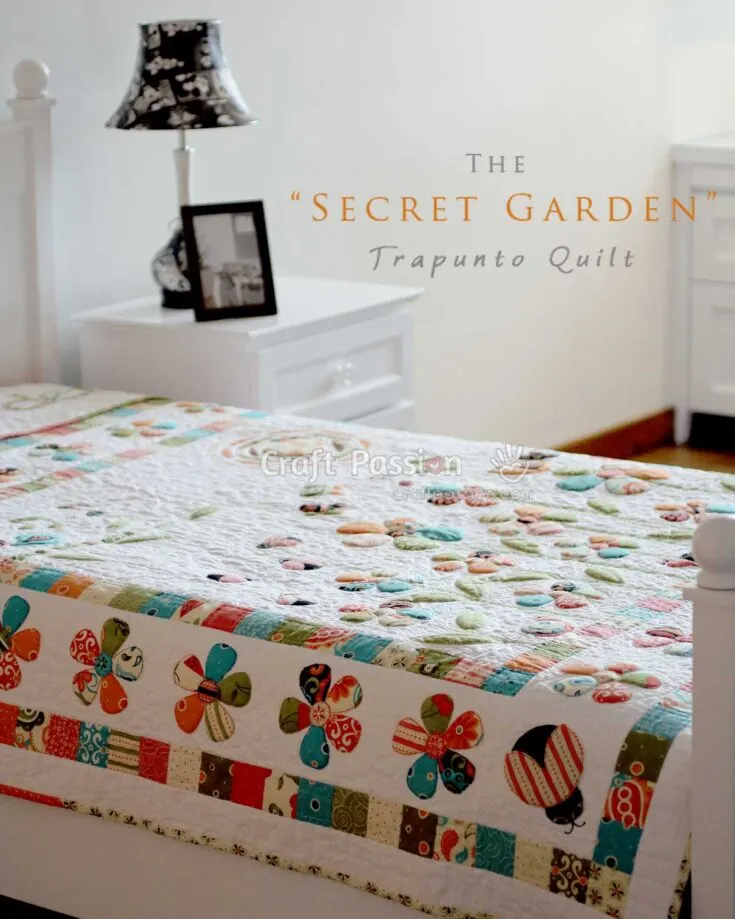
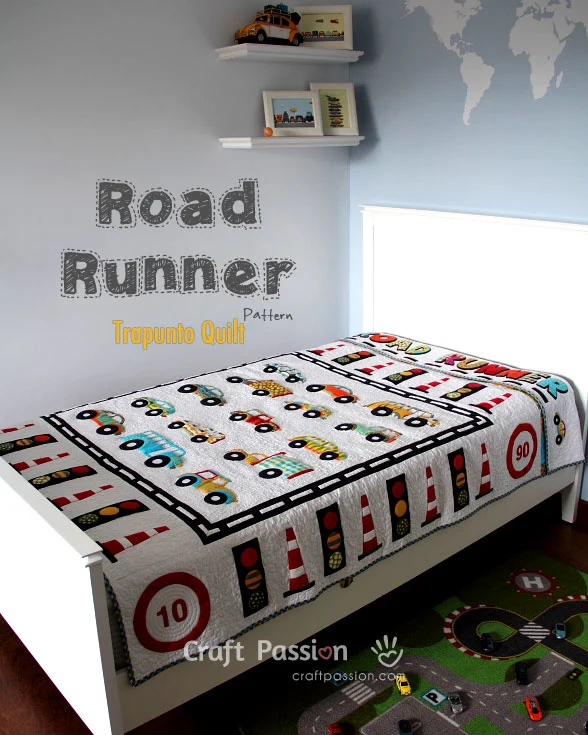
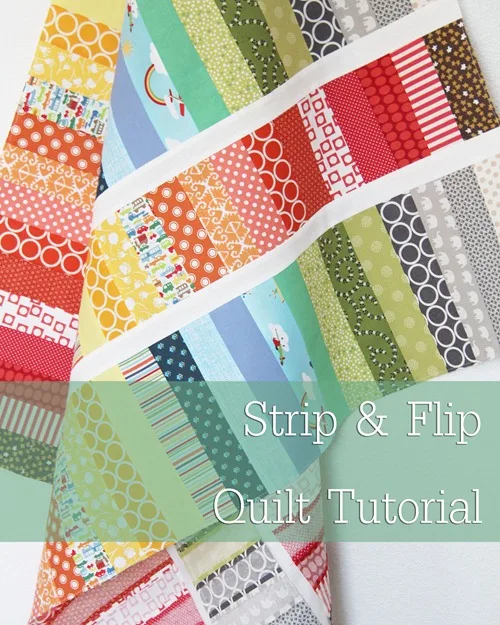


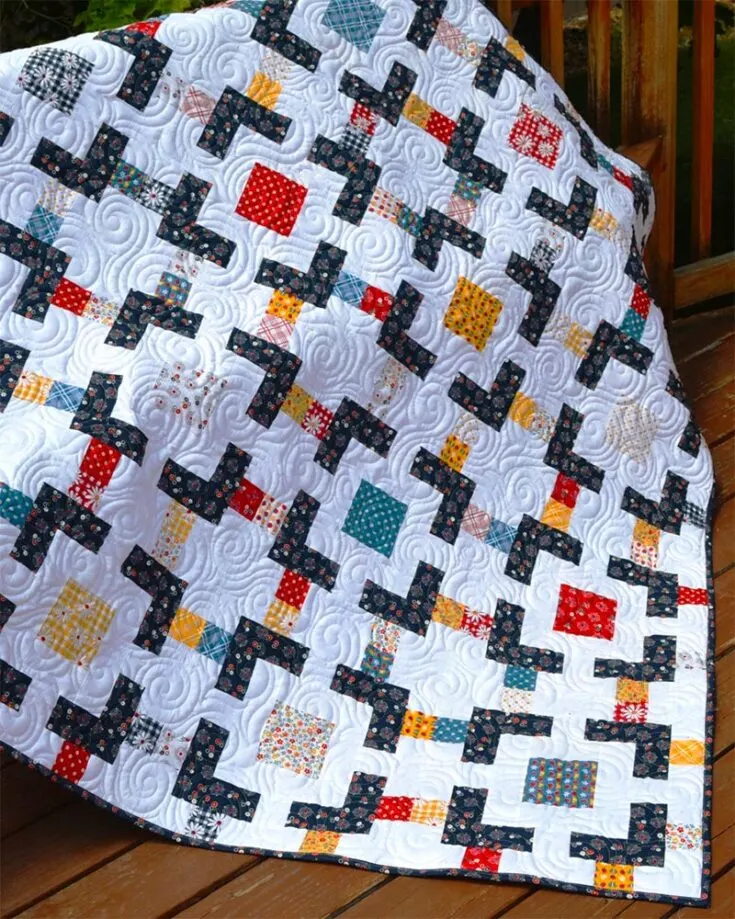






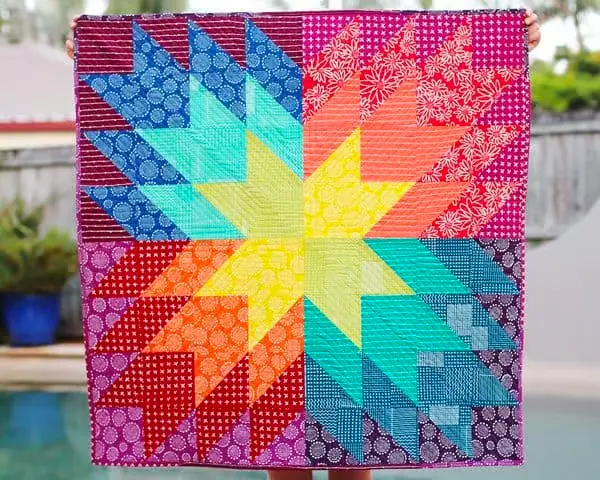
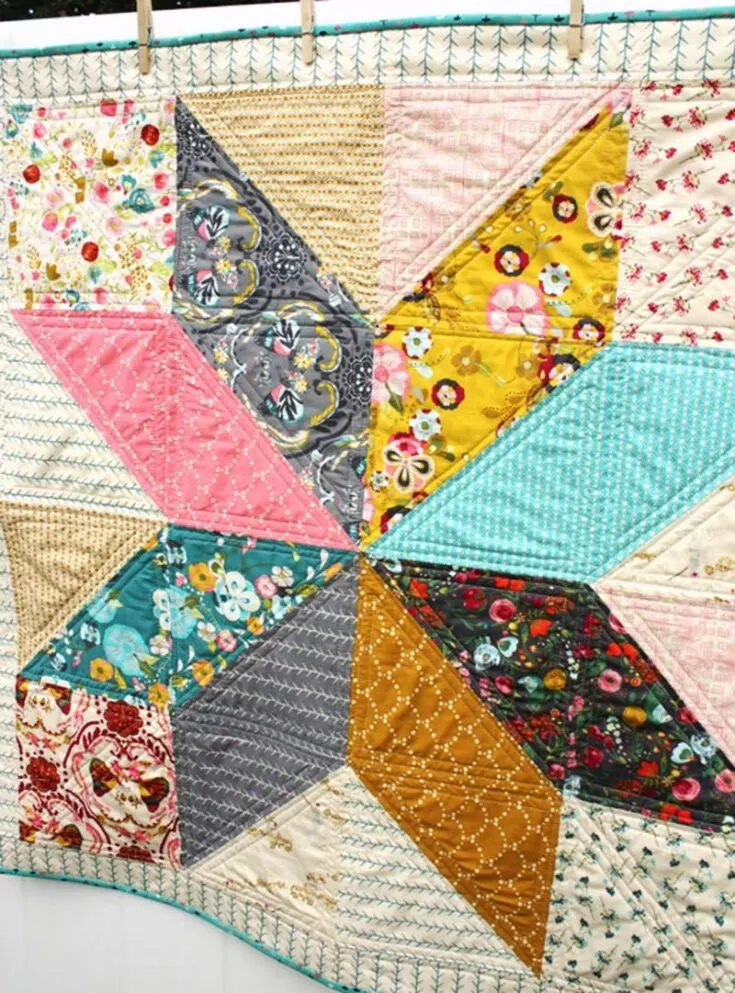

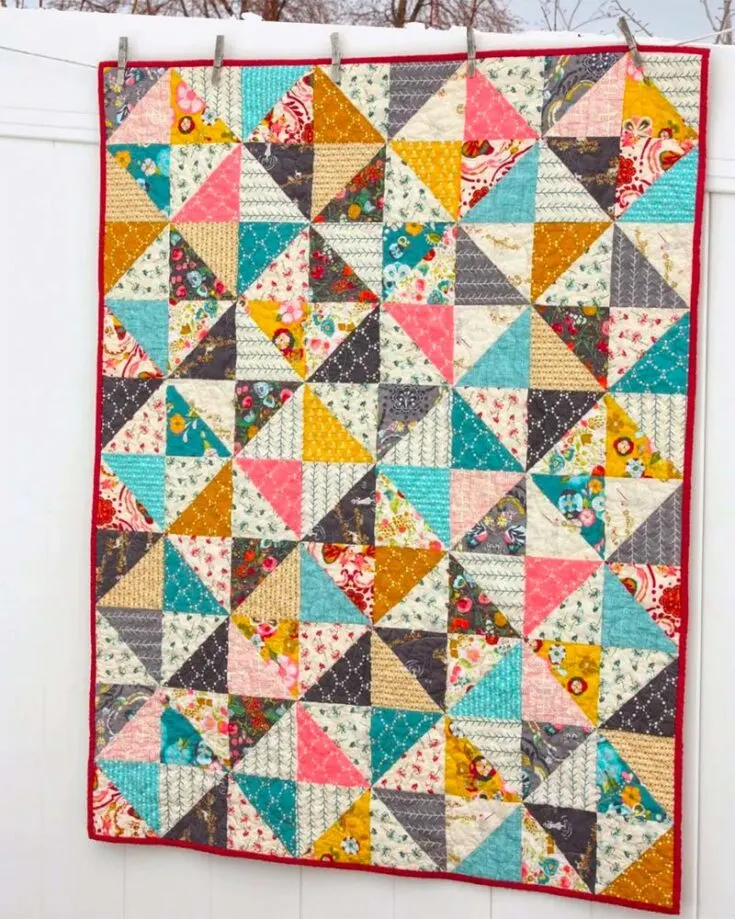











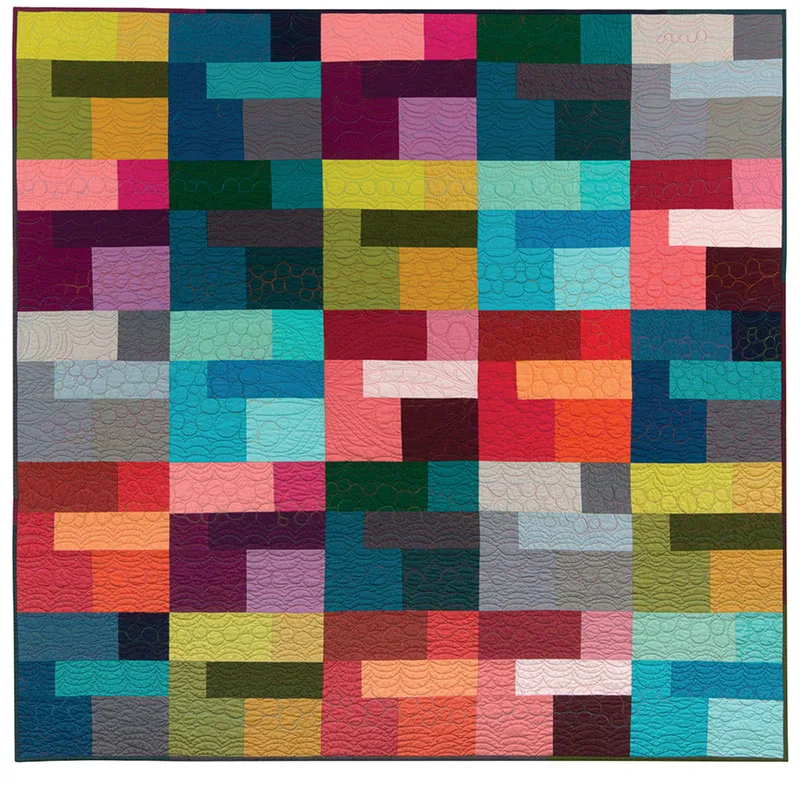





Polly
Thursday 3rd of August 2023
Definitely some patterns I want to make